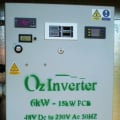Homemade lead acid batteries
Comments
-
Its kind of expensive in the US if you buy "battery acid" from auto stores, its pretty cheap if you buy in bulk from chemical suppliers.
Some sell it by the ton for under 300 bucks. So pretty close to 2 bucks a gallon. Most likely your paying so much because of hazard shipping and environmental laws. While its messy, with some preparation you could filter and concentrate battery acid from car batteries.
-
@BjornM said, I know what you mean. Almost every single component for a DIY battery is hard to find in Sweden. Didn't use to be like that when I was a kid, but now everything is considered dangerous for people or the environment. I have no good source for sulfuric acid yet. Ironically it is one of the cheapest chemical substances in the world. When I lived in Thailand, you could buy it for $2 per gallon.The current price in Thailand is 10 Bhat per 620 ml beer bottle ~6 per US gallon, so still around $2 at current exchange rates, probably much cheaper if purchased in bulk1500W, 6× Schutten 250W Poly panels , Schneider MPPT 60 150 CC, Schneider SW 2524 inverter, 400Ah LFP 24V nominal battery with Battery Bodyguard BMS
Second system 1890W 3 × 300W No name brand poly, 3×330 Sunsolar Poly panels, Morningstar TS 60 PWM controller, no name 2000W inverter 400Ah LFP 24V nominal battery with Daly BMS, used for water pumping and day time air conditioning.
5Kw Yanmar clone single cylinder air cooled diesel generator for rare emergency charging and welding. -
 Battery Acid for our particular batteries would be Sulphuirc Acid, 1 to 15 ratio to De-ionised water/distilled water.
Battery Acid for our particular batteries would be Sulphuirc Acid, 1 to 15 ratio to De-ionised water/distilled water.I use a 80% sulphuric acid and can be readily obtained in 500ml bottles in Europe with out to many issues. So 500ml would make about 7.5 litres, (about 1.5 us gallons). ..... See pic of bottle in my Fume cabinet, with the label disappearing from just the fumes alone.
I think that this homemade battery topic may be raising false hopes regards getting batteries cheap, and now its getting technical and in the Dangerous Acid discussion area. Perhaps another more technical Forum may be better appointed. Depends on the Mods here?
Safety protection at all times.
PLEASE PLEASE remember, NEVER NEVER NEVER ADD water to the NEAT Sulphuric ACID solution.
ADD the Sulphiric Acid to the water very carefully and slowly, and let it disperse within the water. Even so when adding correctly in just one go, in one spot on the water, the solution gets very hot very quick, and spits and spatters.
Don't mess with neat sulphuric acid it does permanent damage to our fleshy bodies.
Everything is possible, just give me Time.
The OzInverter man. Normandy France.
3off Hugh P's 3.7m dia wind turbines, (12 years running). ... 5kW PV on 3 Trackers, (8 years) .... 14kW PV AC coupled using Used/second hand GTI's, on my OzInverter created Grid, and back charging with the AC Coupling and OzInverter to my 48v 1300ah batteries.
-
Since the Plante method of forming lead sponge at the electrodes is so time consuming, how about make the electrodes really thin so the process can be faster?
Lead has low structural integrity, and would easily fall apart when very thin. Instead, lead coated copper foil could be used. This foil could be sandwiched with very thin polypropylene felt, and rolled up into a cylindrical shape. Each layer around 3 mm thick.
From a research article:
"The conditions for copper corrosion were investigated with regard to its use as the negative grid material in high performance lead‐acid batteries with gelled electrolyte. The experiments on copper sheets show that only under very extreme conditions, when there is a thin electrolyte film on the surface and no lead coating over a distance of more than about 3 mm, copper dissolution can occur. In this case, substantial potential shifts in the thin electrolyte film, resulting in a much more positive potential at that part of the electrode, were measured. With a properly lead‐coated copper grid there will be virtually no copper corrosion even under starved electrolyte conditions."
http://jes.ecsdl.org/content/143/1/139.short?related-urls=yes&legid=jes;143/1/139
EDIT: Rewritten for clarity.Off grid in a small cottage in western Sweden. -
Neato! So you can use copper to strengthen the grid or plate? You can order fumed silica online. A rubber cork could be used as a over pressure valve. Not sure if a real 1-2 psi plastic one way valve could be had. The copper and pure lead would certainly mean a low resistance battery. You could probably do a plante plate with an inner copper grid for strength. Eventually it will be exposed but by that time the plate would be pretty compromised anyways.
-
https://translate.google.com/translate?hl=en&sl=auto&tl=en&u=http://www.energialternativa.org/cgi-bin/yabb2/YaBB.pl?num=1267147980
GOLD MINE! A huge thread in italian, google translated by a guy who worked with primordial batteries. Lots of info on its construction.
It took him 4000 hours to reach his target goal. Technically it could go higher but that would compromise cycle life. Straight charge and discharge. He said the reverse method made it gain capacity faster but shed a lot of material and had to be done at low current. This seems like the perfect battery for solar. It grows and grows. You could half form it and just let the day to day use do it for you. His original design (although i don't think he kept it this way) was without separators and had them far apart. I would not do this. Not sure if spacing adds up enough resistance vs separators. So much to read!
-
question ... not related to making your own battery ... but what do people use sulphuric acid for , seeing as you can buy it in large volumes.
Do people in Thailand have another use for it ?2225 wattts pv . Outback 2kw fxr pure sine inverter . fm80 charge controller . Mate 3. victron battery monitor . 24 volts in 2 volt Shoto lead carbon extreme batterys. off grid holiday home -
Cleaning swimming pools and cleaning concrete.petertearai said:question ... not related to making your own battery ... but what do people use sulphuric acid for , seeing as you can buy it in large volumes.
Do people in Thailand have another use for it ?
Powerfab top of pole PV mount | Listeroid 6/1 w/st5 gen head | XW6048 inverter/chgr | Iota 48V/15A charger | Morningstar 60A MPPT | 48V, 800A NiFe Battery (in series)| 15, Evergreen 205w "12V" PV array on pole | Midnight ePanel | Grundfos 10 SO5-9 with 3 wire Franklin Electric motor (1/2hp 240V 1ph ) on a timer for 3 hr noontime run - Runs off PV ||
|| Midnight Classic 200 | 10, Evergreen 200w in a 160VOC array ||
|| VEC1093 12V Charger | Maha C401 aa/aaa Charger | SureSine | Sunsaver MPPT 15A
solar: http://tinyurl.com/LMR-Solar
gen: http://tinyurl.com/LMR-Lister , -
Just a generic link to the large number of uses of sulfuric acid:
https://www.worldofchemicals.com/430/chemistry-articles/industrial-applications-of-sulfuric-acid.html
How many of those have an "in home" use... Probably not many (my plumber used "professional only" sulfuric acid to clear a clogged drain--It worked great for that--Lots of bubbling and heat).
-BillNear San Francisco California: 3.5kWatt Grid Tied Solar power system+small backup genset -
yes you are dating yourself, hahamcgivor said:Yes lead is toxic, but with all relevant precautions, the hazards can be reduced to near zero, the closest I've personally come to recycling batteries is replacing plates with manufactured plates, during my apprenticeship, before the molded case battery technology, am I dating myself? -
wayneworkman2012 said:@BjornM I would recommend making salt water batteries. Salt water batteries have much lower energy density compared to other energy storage solutions, but are dirt cheap to produce and are made of completely non-toxic materials - in fact you can safely eat the materials used in their construction and not be harmed. In addition to those benefits, they are very safe and resilient. You can discharge them very deeply daily, and the materials are not flammable and are safe to touch.
Here is some information on salt water batteries that I gathered together from duckduckgo.com searches:- https://www.wired.com/2011/04/battery-ocean-saltwater/
- https://www.youtube.com/watch?v=kRzlgIAQI4Q
- http://www.solarpanelsplus.com/solar-battery/
- https://www.wikihow.com/Make-a-Homemade-Battery <-- This one lists several battery types, it covers salt water.
- https://www.youtube.com/watch?v=5vOuj_feM2s
- https://www.electronicproducts.com/Power_Products/Batteries_and_Fuel_Cells/How_salt_water_batteries_can_be_used_for_safe_clean_energy_storage.aspx
- https://offgridworld.com/3000-saltwater-battery-can-power-your-off-grid-home-for-10-years/
- https://www.altestore.com/store/deep-cycle-batteries/saltwater-batteries-c1260/
@wayneworkman I just found your post. Very interesting but not much details to work with. I guess I need to start with general battery principles and details, and work from there. Regards - https://www.wired.com/2011/04/battery-ocean-saltwater/
-
Interesting thread. I know nothing about this, but it brings to mind the 1910/1930s the 32 Volt Edison batteries in jars. Sears sold 32 V. gear. The elders of then related to me that at times the lead was removed and new lead replaced. I guess nothing is new.
-
Here is a fun/interesting link that details Lead Acid batteries used in Farm Lighting systems circa 1922
or so:
https://www.powerstream.com/1922/battery_1922_WITTE/batteryfiles/chapter17.htm
And the whole archive:
https://www.powerstream.com/1922/battery_1922_WITTE/battery_WITTE.htm#toc
-BillNear San Francisco California: 3.5kWatt Grid Tied Solar power system+small backup genset -
tabbycat said:Lead is toxic.lead is at least 90+ % recyclable ... lithium ion on the other hand is less than 65%, and everything left is so virulently toxic that it makes lead and mercury look like a joke. Pull your head out of al gores backside.70kw LiFePo4 battery bank, 18 JA solar 200 watt panels, 20 sharp 200 watt panels, morningstar controller(s) and a magnum 4448 inverter with all the usual junk that goes with it.
Categories
- All Categories
- 233 Forum & Website
- 141 Solar Forum News and Announcements
- 1.4K Solar News, Reviews, & Product Announcements
- 199 Solar Information links & sources, event announcements
- 900 Solar Product Reviews & Opinions
- 256 Solar Skeptics, Hype, & Scams Corner
- 22.5K Solar Electric Power, Wind Power & Balance of System
- 3.5K General Solar Power Topics
- 6.7K Solar Beginners Corner
- 1K PV Installers Forum - NEC, Wiring, Installation
- 2.1K Advanced Solar Electric Technical Forum
- 5.6K Off Grid Solar & Battery Systems
- 429 Caravan, Recreational Vehicle, and Marine Power Systems
- 1.1K Grid Tie and Grid Interactive Systems
- 656 Solar Water Pumping
- 816 Wind Power Generation
- 624 Energy Use & Conservation
- 623 Discussion Forums/Café
- 315 In the Weeds--Member's Choice
- 75 Construction
- 125 New Battery Technologies
- 108 Old Battery Tech Discussions
- 3.8K Solar News - Automatic Feed
- 3.8K Solar Energy News RSS Feed




